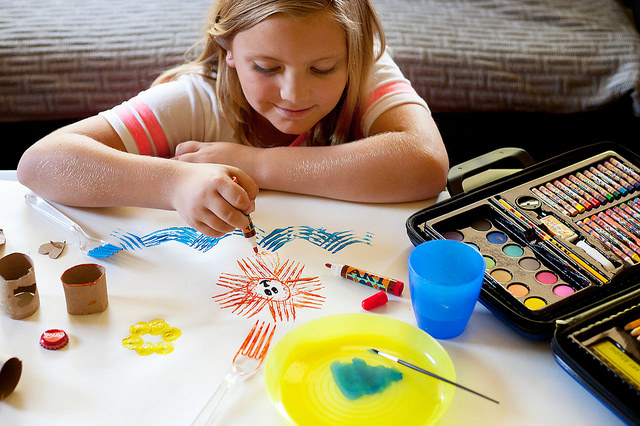Ask someone, “What is an artist?”, and following perhaps an obligatory eye-roll, the reply will most likely be a quick flip through glossary terms and a loose social critique. But North Vancouver’s Artists For Kids (AFK) has been asking these kinds of big questions for 25 years—with none of the exhaustive sighs or prepared statements typical of a more cynical crowd. With a range of programs as well as an impressive and growing collection of over 500 works, AFK has long been facilitating conversations around art, encouraging thoughtful and original responses from students of all ages.
Established in 1990, the program started as what was seen as a pre-emptive strike. “It was a reaction to the government clawing back on the support given to the fine arts,” reflects director Yolande Martinello. “Educators were concerned if kids would have access to a quality art education. Teachers started looking for ways that would support revenue.”
That search led founders to a unique funding model where pieces are purchased by AFK from artists who are then provided a budget to create limited-edition prints. Those prints are then sold and the revenue is used to fund the programs at AFK. “It’s a reciprocal arrangement where we are buying a piece of work,” says Martinello. “It isn’t just giving on the part of the artist. It’s a very nice symbiotic relationship.” Print editions available range from Karin Bubaš, to Ian Wallace, to Rodney Graham and Ted Harrison, reflecting the eclectic and comprehensive nature of the collection.
AFK’s Windows to Canadian Art program brings every Grade 5 class in the North Vancouver district to a gallery space exhibiting selections from the collection. There, students discuss art using some of the nation’s most renowned artists as their prompt. “In North Vancouver, the general awareness of Canadian visual arts culture is much higher than what you might find in other communities because, for 25 years, kids have been coming to a gallery,” says Martinello.
The current exhibition, “At What Cost?”, brings together some big themes surrounding the human environment. Pieces include Edward Burtynsky’s large-format industrial landscape photography, a clear continuation of the theme that sends a powerful message. Conversely, Douglas Coupland’s Paint Pots #1, an aerial photograph of paint pots taken in Gordon Smith’s studio, invites children to think abstractly about visual cues, and ponder what the concept of environment means beyond our typical conceptions.
The impact of these exercises can be abstract, as well. “Kids who aren’t hampered by the box can think outside of it and come up with unique ways of dealing with problems,” Martinello says. “Art is about solving problems. So just as a virtue of experience, you learn how to solve problems on many platforms.” It’s these conceptual but very real situations where art, its history, and its language can be most apt and efficient. It is a very reassuring and positive take on what art is. No eye-roll necessary.
Photo by Personal Creations via Flickr.








